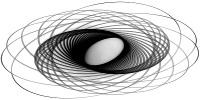February 2005 – February 2008: Reverse Engineering of Reliefs. EPSRC GR/T24425/01. PI: RR Martin, CoI: AD Marshall, FC Langbein, PL Rosin. Industrial partner: Delcam Int PLC. £200,425.
Reverse engineering takes 3D scans of points captured from the surface of an object, and turns them into a high level CAD model which can then be edited, analysed, etc – the ultimate goal is to enable a revised part to be made. This project will specifically consider reverse engineering of reliefs from objects such as ornamental porcelain, so that they maybe removed in a redesign, or applied to a different piece of porcelain, for example.Issues to be solved in the project are* how to identify which scanned points correspond to the relief, and which to background, modelling the shape of the background surface to which the relief is attached, representing the relief relative to this background surface, representing a single unit of the pattern for a repeating relief determining how to flatten the background surface of the relief so that it is ready to be applied to a new surfaceThis research will be carried out in cooperation between the School of Computer Science at Cardiff University, and Delcam plc, Birmingham.
![]() This work is licensed under a Creative Commons Attribution-NonCommercial-ShareAlike 4.0 International License.
This work is licensed under a Creative Commons Attribution-NonCommercial-ShareAlike 4.0 International License.
